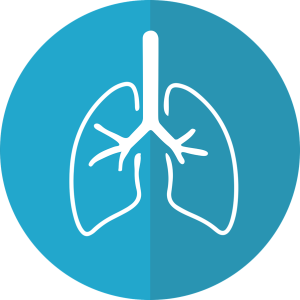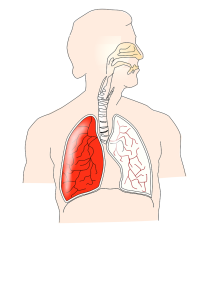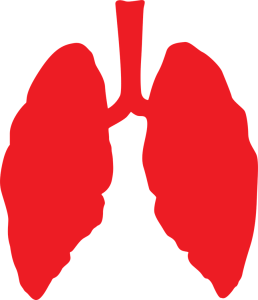Pulmonary fibrosis is a respiratory disease in which damaged tissues become hard and thickened. This leads to compromised lung function and disrupted oxygen transfer into the bloodstream. Various factors can cause damage to the lungs, including prolonged exposure to specific toxins, certain medical conditions, radiation therapy, and certain medications.
What is pulmonary fibrosis?
Pulmonary fibrosis is a condition that occurs when lung tissue is damaged and scarred. This thickened, hard tissue makes it difficult for the lungs to work properly. Pulmonary fibrosis worsens over time. Some people may remain stable for a long time, but in others, the disease progresses quickly. When the condition worsens, people start to experience increasing shortness of breath.
The scarring that occurs in pulmonary fibrosis can be caused by many things. Often, doctors and other health professionals cannot determine exactly what causes the problem. When the cause cannot be found, the condition is called idiopathic pulmonary fibrosis.
Idiopathic pulmonary fibrosis usually occurs in middle-aged and older adults. Sometimes pulmonary fibrosis is diagnosed in children and infants, but this is rare.
The lung damage caused by pulmonary fibrosis cannot be repaired. Medications and therapies can sometimes help slow the rate of fibrosis, relieve symptoms, and improve the quality of life. For some people, lung transplantation is the only option.
Unlike another severe lung disease, COPD (chronic obstructive pulmonary disease), pulmonary fibrosis usually occurs for unknown reasons. While in COPD, the lung tissues become inflamed with the destruction of the alveoli, causing shortness of breath, and the airways are blocked with mucus.
What causes pulmonary fibrosis?
The most common causes of pulmonary fibrosis are:
- Long-term exposure to toxins and pollutants such as coal dust, grain dust, asbestos fibers, silica dust, and animal droppings in the environment or at the workplace.
- Lung cancer or breast cancer, radiation therapy.
- The extent of the damage depends on which part of your lungs is exposed to radiation, the dose of radiation, and whether there is accompanying chemotherapy.
- Medications: for chemotherapy, for heart arrhythmia, some antibiotics, or anti-inflammatory drugs.
- Medical conditions, such as dermatomyositis, mixed connective tissue disease, rheumatoid arthritis, pneumonia, polymyositis, sarcoidosis, scleroderma, and systemic lupus erythematosus.
What are the symptoms of pulmonary fibrosis?
The symptoms of pulmonary fibrosis can include:
- Shortness of breath – breathing is rapid and shallow.
- Persistent dry cough.
- Severe fatigue.
- Shortness of breath during or after exercise.
- Unexplained loss of body weight.
- Pain in the muscles and joints.
- Widening and rounding of the tips of the fingers or toes, known as clubbing.
If symptoms progress, you may develop curved fingers on the hands or feet and cyanosis due to low oxygen saturation.
Risk factors
Among the factors that pose a risk for the disease are:
- Age. The risk of pulmonary fibrosis is higher in middle-aged and older people.
- Gender. Men are at a higher risk than women.
- Smoking. Smokers, former smokers, or people with emphysema are at an increased risk.
- Exposure to workplace pollutants – mining, agriculture, construction
- Cancer treatment with radiation therapy and chemotherapy.
- Genetic factors. Some types of pulmonary fibrosis can be inherited and passed down through generations.
How is pulmonary fibrosis diagnosed?
- Medical history and physical examination
Your doctor will review your personal and family medical history, inquire about signs and symptoms, and listen to your lungs as you breathe.
- Blood tests
Blood tests can help evaluate the function of the liver and kidneys and rule out other conditions.
- Imaging tests:
- Chest X-ray screening test to see if there are any lung abnormalities.
- Computed tomography (CT) scan can determine the extent of lung damage. It can help monitor your condition and assess whether your symptoms are responding to treatment.
- Echocardiogram can assess the pressure in your right heart chamber in patients with complications related to pulmonary fibrosis.
How is pulmonary fibrosis treated?
Pulmonary fibrosis is incurable, but early diagnosis and treatment can improve and prolong lung function. Medications such as pirfenidone and nintedanib are antifibrotic agents. They help to slow the progression of fibrosis or scarring in the lungs.
Oxygen therapy may increase oxygen levels in the blood. It can reduce shortness of breath and increase endurance. Participating in pulmonary rehabilitation can reduce fatigue and improve the quality of life for patients.
A radical measure to overcome the disease is lung transplantation.
Complications
Pulmonary hypertension can occur because the scars in the lungs may reduce the size of the arteries and capillaries, leading to increased pulmonary vascular resistance and elevated pressure in the right chamber. Some types of pulmonary hypertension can be life-threatening.
- Cor pulmonale occurs when the right chamber has to pump high blood pressure into the pulmonary artery for a prolonged period, leading to right heart failure.
- Respiratory failure due to dangerously low oxygen levels in the blood in the late stages of this pulmonary condition.
- Infections of the lungs.
- Pulmonary embolism.
- Lung collapse or pneumothorax.
- Lung cancer.
Lifestyle changes and home remedies
Interstitial lung disease is serious, so medical treatment must be supported by a radical change in your lifestyle.
First and foremost, if you are a smoker, quit smoking. Eat a nutrient-rich diet with enough calories because people with interstitial lung disease tend to lose weight. Try six smaller meals instead of three large meals a day.
Engage in regular exercise to keep your lungs healthy and relieve stress. Ensure adequate rest. Get vaccinated to minimize the risk of respiratory infections such as the flu or pneumonia. Follow your doctor’s instructions and treatment plan strictly.
When you first visit the doctor’s office for suspected lung problems, prepare for a lengthy discussion with the pulmonologist. He may ask you the following questions:
- What symptoms do you have?
- When did you first notice your symptoms?
- Have you had any preceding conditions when diagnosed with pulmonary fibrosis, such as arthritis?
- Have you taken any medications or supplements in the last five years?
- Have you been exposed to excessive dust at your workplace?
- Do you smoke regularly?
- Does anyone in your family have a chronic lung disease?
- Have you undergone radiation therapy or chemotherapy?
It’s good to visit the doctor with your friend or family member to help you remember all the information and provide you with emotional support because pulmonary fibrosis is a serious and complex condition. People with pulmonary fibrosis require regular check-ups with a doctor to monitor their condition and treatment course. Appropriate combinations of treatments can help improve lung function and quality of life.
Frequently Asked Questions:
What are the differences between pulmonary fibrosis and chronic obstructive pulmonary disease (COPD)?
Pulmonary fibrosis occurs when scar tissue builds up in the lungs, making it difficult to breathe. The underlying cause is usually unknown. In COPD, lung tissues become irritated and inflamed with the destruction of alveoli, causing breathlessness, and the airways become clogged with phlegm.
How quickly can pulmonary fibrosis worsen?
The rate of progression and severity of symptoms varies significantly from person to person. Some people deteriorate rapidly and severely, while others may experience only minor changes over the course of years.
Is it life-threatening if symptoms suddenly worsen?
In people with pulmonary fibrosis, especially idiopathic pulmonary fibrosis, a sudden worsening of breathlessness over weeks or days can occur. This is called an acute exacerbation and can be life-threatening. The cause may be another condition or illness, such as a lung infection. However, the cause is often unknown.
Important!
If your symptoms suddenly worsen while diagnosed with pulmonary fibrosis, contact your doctor or another medical specialist as soon as possible. If your symptoms worsen, especially if they worsen rapidly, seek Emergency Medical Assistance immediately!






0 Comments